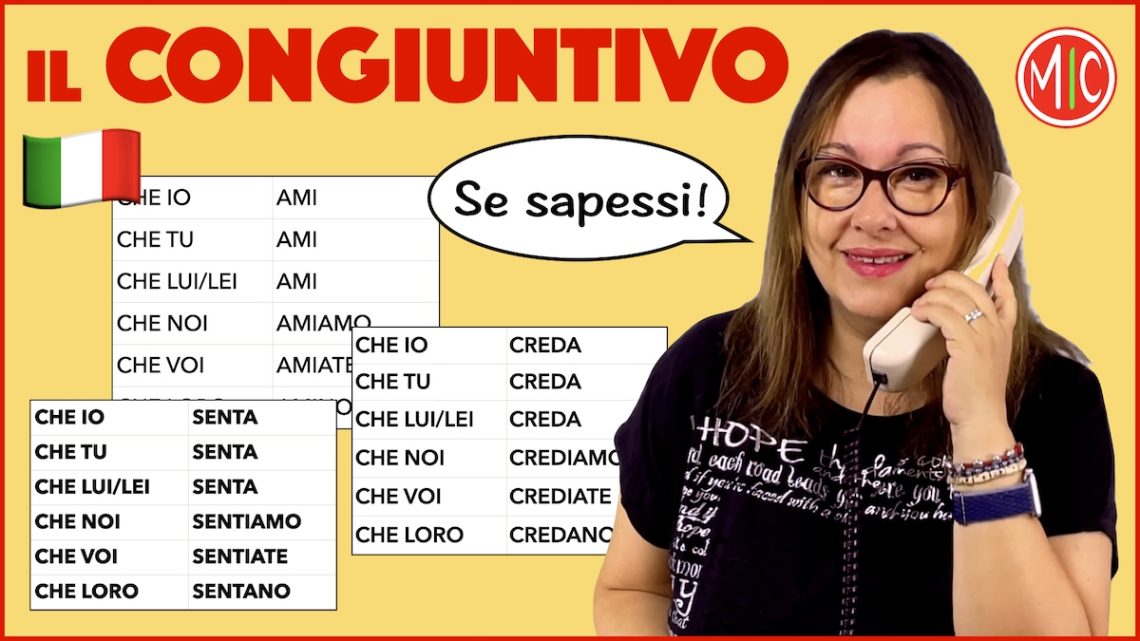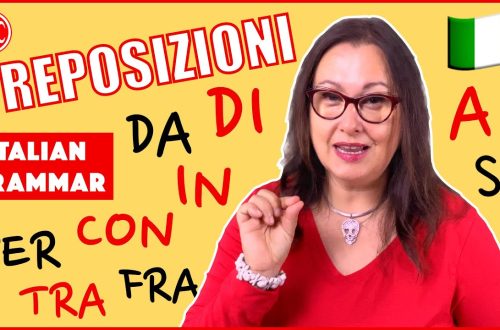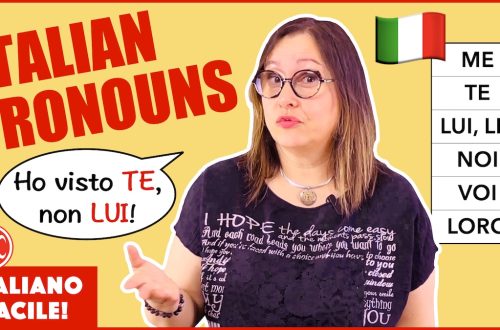
The subjunctive is the most elegant mood of the Italian language, and at some point you need to at least be able to identify it when you hear it. If you can also use it correctly, then you will be well on your way to fluency. This article will introduce all you need to know on the Italian subjunctive mood.
What is the subjunctive mood?
What is the subjunctive mood – il congiuntivo? Il congiuntivo congiunge – the subjunctive joins two clauses. Most of the times (but not always!), you will find it in a dependent clause, a statement that is connected to another one by the conjunction (congiunzione) CHE, that or which.
For example:
Penso che Jannik Sinner sia bravissimo.
Penso —> I think, main clause
che —> that, conjunction
Jannik Sinner sia bravissimo —> Jannik Sinner is very good, dependent clause.
The verb SIA in the dependent clause is present subjunctive; here it means (he) is. Look at a similar sentence:
So che Jannik Sinner è bravissimo.
So —> I know, main clause
che —> that, conjunction
Jannik Sinner è bravissimo —> Jannik Sinner is very good, dependent clause.
Here we didn’t use SIA, subjunctive, but the basic form È, (he) is, present indicative. Why? It all depends on the verb that comes before CHE. First we had Penso, I think, then we had So, I know.
The Golden Rule
Bear in mind that this is a simplification, but we can think of the matter this way: the subjunctive is the mood that expresses everything that is subjective – uncertainty, possibility, fear, doubt, wish, personal opinion. A few examples:
- Possibility —> Magari oggi fosse una bella giornata! I wish today was a good day!
- Assumption —> Penso che Luca sia un medico. I think Luca is a doctor.
- Fear —> Ho paura che Sara non passi l’esame. I’m afraid Sara won’t pass the exam.
- Doubt —> Paolo è in ritardo: che abbia perso il treno? Paolo is late: could he have missed the train?
The indicative mood, instead, presents facts as true, real, certain:
- Oggi è una bella giornata. It’s a fine day today.
- So che Luca è un medico. I know Luca is a doctor.
- Sono sicura che Sara passerà l’esame. I’m sure Sara will pass the exam.
- Paolo è in ritardo: ha perso il treno. Paolo is late: he missed the train.
Alas, there are exceptions to this rule. For example, the expression secondo me, in my opinion, is followed by the indicative mood, not the subjunctive. What you really need to focus on is the verb in the main clause: some verbs must be followed by the subjunctive. Pensare, ritenere, credere, dubitare, sperare, temere, augurarsi che… are all followed by the subjunctive.
But don’t use the subjunctive all the time!
There is a rule that has no exceptions: do not use che + subjunctive when the subject of the dependent clause is the same as the subject of the main clause. For example:
Lucia thinks she is special.
Lucia is the subject of both clauses: she thinks and she is special. In Italian we cannot say: Lucia pensa *che lei sia speciale. We must use di + infinitive instead:
Lucia pensa di essere speciale.
You can find the infinitive in English as well:
I hope to understand. —> Io spero di capire. (and NOT Io spero *che io capisca.)
If the subject is different, then it’s time to use the subjunctive!
I hope he understands. —> Spero che lui capisca.
The subjunctive in independent clauses
Sometimes, the subjunctive is also used by itself, in independent clauses, usually to express a wish, a doubt, or an exhortation, or in an exclamation:
- Paolo è in ritardo: che abbia perso il treno? Here che abbia perso il treno is similar to forse ha perso il treno, maybe he missed the train, but it has more emphasis.
- Viva l’Italia! (Long live Italy!) is also subjunctive: here the word che is not expressed, but the sentence actually means Che viva l’Italia! We find this in Spanish: ¡Que viva!
- Magari fosse vero! How I wish it were true. Fosse is imperfect subjunctive, and here we use the subjunctive in English, too.
Let’s sum it all up!
- The subjunctive mood is used to express possibility, wish, fear, doubt, personal opinion. The indicative mood, in contrast, presents a fact as true, certain.
- The subjunctive is often used in dependent clauses introduced by che: Io spero che tu vinca la gara. BUT if the subject of the two clauses is the same, we use di + infinitive: Io spero di vincere la gara.
- The subjunctive is also used in independent clauses to express a doubt, a wish, an exhortation, an exclamation: Fosse vero! Viva l’Italia!
- The subjunctive has four tenses: presente, imperfetto, passato, trapassato.
Some say the subjunctive is dead. While it’s true that it is often replaced by the indicative mood in informal speech among friends and family, it’s actually very well alive and kicking, and not only in high-register written Italian. Try to identify it whenever you listen or read in Italian, and you won’t be caught off-guard when someone uses it with you.
Alla prossima!
Anna
We also wrote three articles on the subjunctive mood for our favourite website for learners of Italian, Daily Italian Words.
Related content:







Grazie mille
Grazie a te, Rachel! vedo con piacere che ci segui anche sul blog!